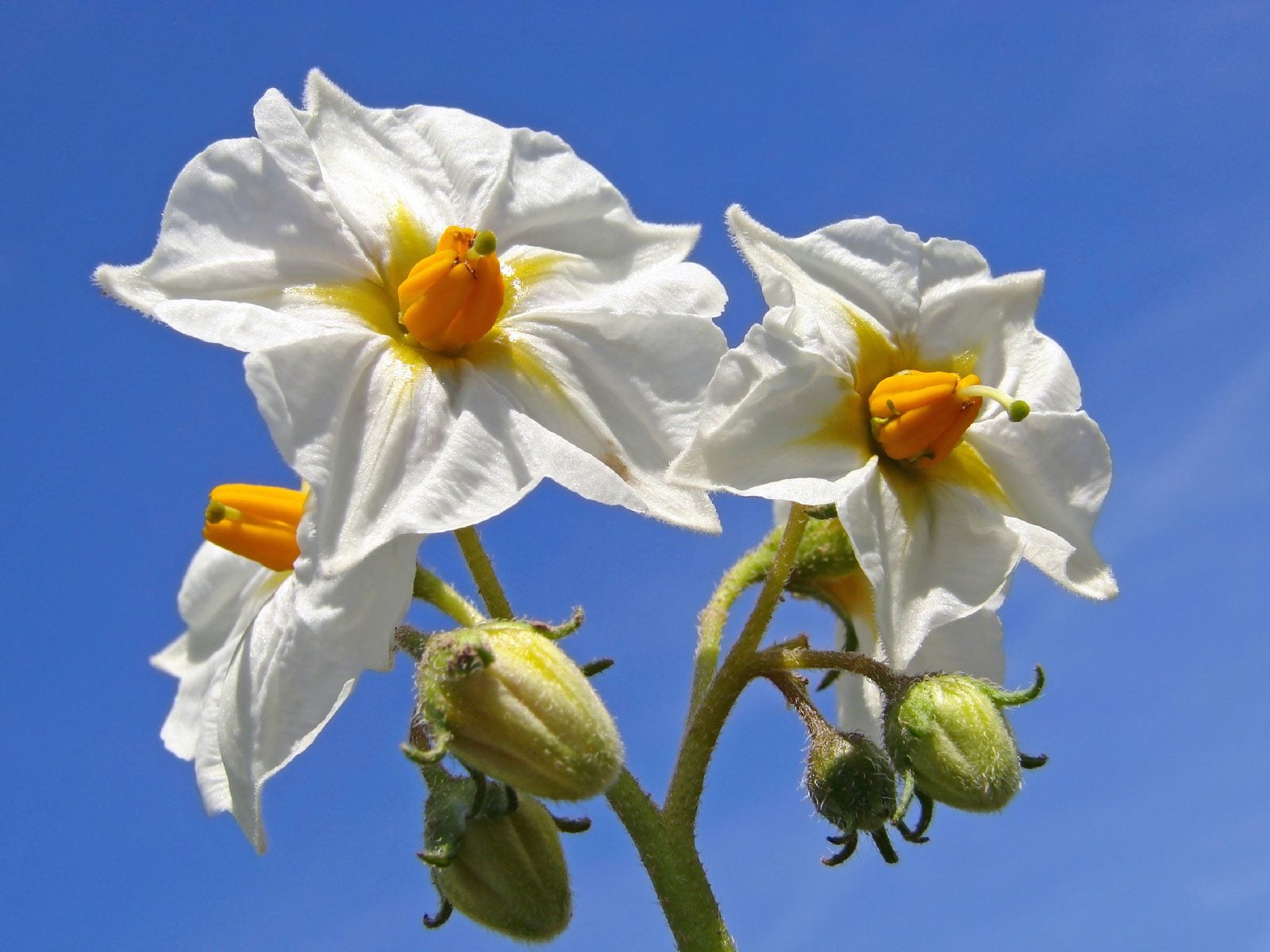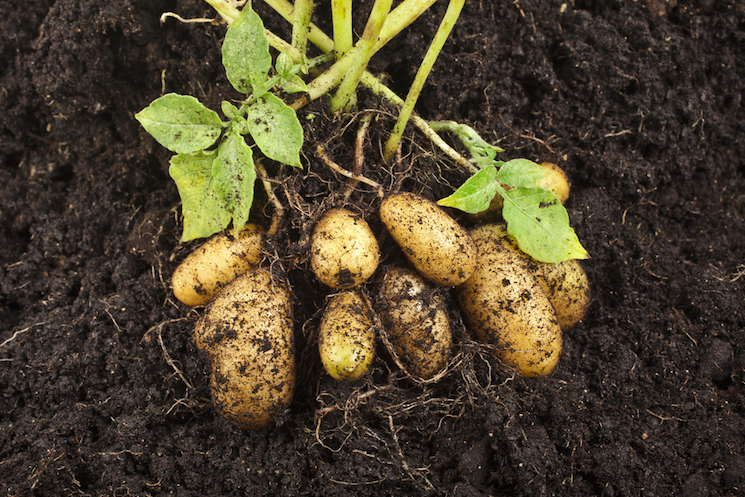The potato (Solanum tuberosum) is one of the world’s most versatile and widely consumed food crops. Originally cultivated in the Andean regions of South America, potatoes have since become a typical food in supermarkets globally. Potatoes are part of the nightshade family (which includes the tomato, eggplant, pepper, and deadly nightshade) and are closely related to the tomato plant (that’s why you can make a pomato/potato tomato).


The potato can also clone itself via its seed potatoes, which have “eyes” or buds. Each eye can sprout and grow into a new potato plant. A potato can also produce natural fruits and seeds but is rarely used.
When you get a good seed potato, follow these instructions to plant it successfully:
- Grab your seed potato
- If your potato is large, cut it into pieces, ensuring each piece has at least two “eyes.”
- Allow the seed potatoes to sit for 1-2 days, but make sure they don’t rot
- Plant the seed potatoes in a large pot or container with drainage holes (if you want to plant it outside, then you can do that too)
- Fill it with six inches of soil, place the seed potatoes on top, and cover with an additional 4-6 inches of soil
- Make sure you water them about two times a week
RELATED ARTICLES
https://milnepublishing.geneseo.edu/botany/chapter/potato/
https://cipotato.org/potato/how-potato-grows/
https://www.almanac.com/plant/potatoes
https://en.wikipedia.org/wiki/Potato
https://www.sciencedirect.com/topics/agricultural-and-biological-sciences/solanum-tuberosum
TAKE ACTION
https://awaytogarden.com/growing-potatoes-organically-when-and-how-to-plant-hill-and-harvest/
https://www.gardenary.com/blog/your-quick-easy-guide-to-growing-potatoes-in-raised-beds






